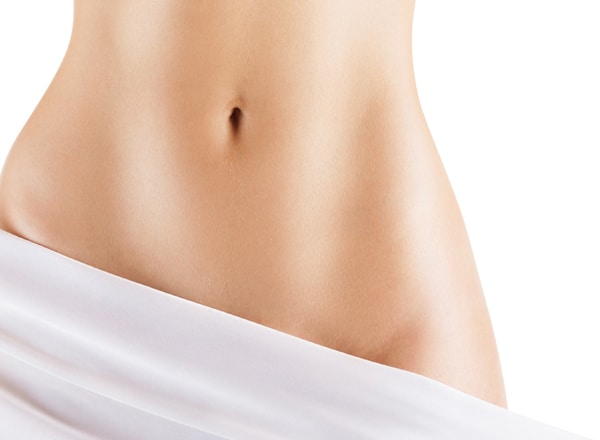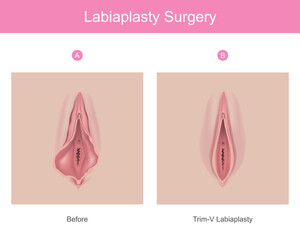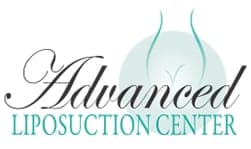Labiaplasty Pittsburgh
Labiaplasty Pittsburgh Treatment
Labia sizes greatly vary among women. Labiaplasty improves enlarged labia minora (inner vagina lips) and labia majora (outer vagina lips) . These are not uncommon, and although they do not harm the woman, she may feel dissatisfied with the appearance and experience discomfort with undergarments and intercourse. Several factors including genet

ics, age and childbirth can contribute to women developing a laxity of vaginal tissues.
During the Labiaplasty surgery, Dr. Giraldo will trim the labial tissue to make it smaller and complementary, yet still natural-looking. Although all surgeries administer scars, the scars after the Labiaplasty are virtually invisible.
Ask the Advanced Liposuction Center about vaginal rejuvenation with labiaplasty.
It certainly hasn’t replaced breast enhancement as the most popular cosmetic procedure, but vaginal rejuvenation appears to be catching up. According to the New York Times, a growing percentage of the cosmetic procedures performed on women in their 20s are labiaplasty surgeries. In layman’s terms, these are minimally invasive procedures which improve the appearance of the labia (lips) of the vagina.
According to a report issued by the Adolescent Health Care Committee, young women today are under increasing pressure to achieve an “ideal” body. Furthermore, this increasingly involves the appearance of the vagina. In particular, the size, shape, and proportions of the labia.
Complications
The Ideal Candidate
A healthy woman who desires a more cosmetically pleasing and comfortable labia region. Patients should have realistic expectations and be in good overall health and not pregnant or nursing. Candidates include women who feel their labia are:


- Thinned out
- Poorly shaped
- Too large
- Protruding
- Uncomfortable
- Uneven
- Wings
Benefits of Labiaplasty:
- Boost self confidence
- Improve vaginal appearance
- Eliminate pain during intercourse
- Reduce discomfort of rubbing undergarments
Recovery
Dr. Giraldo’s patients are often surprised with how little discomfort there is with this procedure. After the procedure, patients may experience soreness for 3-4 days. During the first month post-surgery, patients must be very gentle with the tissue because of the small, dissolvable sutures used. Patients will be prescribed antibiotic ointment to apply to the labia. Patients should refrain from sexual activity for 4 weeks.
Pittsburgh Labiaplasty Popularity

As women are considering more cosmetic procedures or all types, the popularity of labiaplasty has soared in recent years. Read on to discover more about this fascinating, if little talked about, procedure.
- In many cases the patient doesn’t need the procedure to begin with.
“I routinely see women as young as 16 in my office, and they think they need a labiaplasty. They don’t. In all, I’d say that I talk women out of this procedure more times than I perform it.” According to one New York based cosmetic surgeon Dr. W. what these women are actually concerned with is what is known as “camel toe.” Says Dr. W “it’s completely normal. What I end up doing is sitting down with the young woman and using pictures to educate. There’s countless ways that the vulva can appear. At the end of a 20 minute consultation I want them to leave thinking that theirs is perfectly normal.”
Six Keys to Successful Labiaplasty Aftercare
Labiaplasty is the fastest growing designer vagina surgery in the US. Increasingly, women are becoming aware that they can do something about the appearance and feel of their vagina. Labial reduction surgery can be used to address a host of issues from medical to aesthetic. Many women consider labial reduction because they are experiencing discomfort when wearing tight clothing, during intercourse, or when riding a bike. Others may be self-consciousness regarding their vagina’s appearance. Labiaplasty is an outpatient surgery, most commonly performed using general anesthesia, local anesthesia with oral sedation or local freezing. The procedure is generally tolerated extremely well resulting in high satisfaction rates. Here are five labiaplasty aftercare hacks to get you back out there as soon as possible:
Take care of yourself!
Since labiaplasty is an outpatient procedure, meticulous at-home incision care is one of the most important elements of successful aftercare. You should resume showering 24 hours after surgery. We recommend gently cleaning the incisions with mild soap and running water over them for the first two weeks. To dry, gently pat the region. To aid with healing, you should apply a thin layer of vaseline. Finish by placing a thin pad in your underwear. You should expect to experience mild bleeding during the first few days of healing. The bleeding should taper off after that to light spotting.
? Ice Ice Baby ?
Swelling will be at its worse during the first 48 hours. During this time applying cold compresses while lying down can significantly reduce swelling. Do not place the cold pack directly on the skin, but instead apply it over your undergarment. We recommend leaving the cold compress on for 20 minutes and then taking it off for 20. This 20/20 routine will be even more effective if you elevate the area by placing a pillow under your bum.
Body Dysmorphia
Women with a psychological condition known as body dysmorphia should also be excluded as candidates. The hallmark of this condition is the strong, often consuming belief that one’s body appears different than it does in reality. This condition goes beyond simple low self-esteem and poor body image. In such cases, it’s likely that no cosmetic procedure will challenge this false belief. “What these women really need is counselling. We work with several very good counsellors in the area, and I refer patients every week.”
There’s multiple different reasons why someone might choose labiaplasty.
“I see a lot of patients whose inner lips (labia minora) are very large. It’s a genuine problem, because many of these individuals have problems simply inserting a tampon. Sex is often painful, and these patients frequently complain of chaffing from tighter clothing. These are all excellent reasons, and these folks are great candidates. They’re doing it for the right reasons,” says Dr. G“I also see women with one inner labia that’s larger than the other. I consider this a good reason. I’m still always concerned with possible psychological issues, but I’m very comfortable operating on these candidates.
Of course, there are many patients who come in with purely cosmetic concerns. They’re often doing it for the right reason as well—to make themselves happier and more confident. I’d say that these women are the majority, in fact,” continues Dr. “I’m equally comfortable with this. But sometimes the procedure just isn’t needed, and I’m not afraid to tell patients that.”
Labiaplasty is fairly quick and minimally invasive—yet complex and technically demanding.

Labiaplasty is an outpatient procedure, using only local anesthetics such as lidocaine . However, we do regard it as a relatively complex procedure. When choosing a surgeon their level of experience should be a key factor. While all of these procedures fall under the labiaplasty category, some are trickier than others. The outer labia (majora) are more commonly enlarged, yet the inner labia (minora) can become so as well. For the inner lips the procedure is somewhat more complicated. Less demanding cases labiaplasty can take as little as 15 minutes. In complex cases operating time can be much longer, up to 2 hours or more. If both sets of labia are involved this will obviously add to this time.
The recovery process is longer than other minimally invasive procedures. There’s also likely to be more downtime.
According to Dr. , most patients are likely to underestimate how long full recovery will take. Self-dissolving sutures are typically used, and these are usually gone in about 3 weeks. It can be much longer, however, before the vagina is fully functional, e.g. ready for sex. “I always advise my patients to soak in epsom salts 3 times daily for the first week. After that it’s a good idea to continue with once a day until full healing takes place. A hair-dryer should be used to dry the area immediately afterwards. I also prescribe compression garments, which minimize the chances of chafing injuries.
It’s all about optimizing the healing environment—this is a sensitive area, after all,” continues Dr. G . We prescribe antibiotics as a safety precaution against infection, typically during the initial phases of healing.
Pittsburgh Labiaplasty Recovery
Hey! Take it easy!
It is important to take a break from your exercise routine and let your body heal. Avoid strenuous activities and ask for help when you need to lift anything over five lbs. By limiting your physical activities, you are significantly lowering your risk of bleeding and increased swelling at the site of the procedure. Avoid activities that increase your heart rate and blood pressure. Prolonged standing can also increase swelling during early healing. Friction may not just result in discomfort, it can also trigger bleeding and swelling. The best way to avoid unnecessary friction is to minimize unnecessary walking. After a month, you can return to your normal activities.
Take your pain medication as prescribed
Prescription pain medicine is often necessary for a couple of days after the procedure. Take your prescriptions as recommended. Don’t wait until you feel discomfort before taking your medication. If you delay too long, you run the risk of getting behind the pain. After a few days, patients are encouraged to tail off their use of the prescription pain medication, replacing it with plain or extra-strength Tylenol when possible. As mentioned above, it is essential that you take your pain medication when you are experiencing any discomfort. Not only does it help alleviate the the pain, it can keep your heart rate and blood pressure from increasing. When in pain, your body will increase your heart rate and blood pressure, which in turn may increase risk of post-operative bleeding. Once you have stopped taking prescription pain medication, you may resume driving. Cold compresses can also be used to effectively treat discomfort.
Don’t rush your recovery
Allowing adequate recovery time following a labiaplasty procedure is important. Do not be in a hurry to return to work, your studies or other obligations. Many patients prefer to undergo labiaplasty on a Wednesday or Thursday. This allows them 3 or 4 days rest before returning to light work (such as a desk job or equivalent duties) by the following Monday. If you push yourself to return to work too soon, it may compromise the progress of your healing by increasing swelling. You may also increase the risk of wound healing complications.
Insurance is unlikely to cover Labiaplasty .
Labiaplasty is rarely covered unless there’s a genuine medical issue which interferes with day-to-day functioning. Even if sex is painful or the patient is prone to chafing most major insurances will be hesitant to pay. For the vast majority of patients this remains an elective procedure, and costs must be covered out of pocket. Says Dr. G “Our office rarely sees this procedure covered. Almost never, in fact.”
Frequently Asked Questions
Q: What does Labiaplasty involve?
A: Dr. Giraldo performs the Labiaplasty in our Cranberry Township office suite under local anesthesia with mild sedation. The procedure typically lasts 1 hour. Patients must have a driver to take them home after surgery. We recommend taking 1-2 days off of work to rest. Q: Is Labiaplasty painful?
A: The procedure is not painful but patients may experience mild-moderate discomfort post-surgery.
Controlling pain
As with antibiotics, a short course of narcotic pain medication is usually prescribed after a labiaplasty. Non-Steroidal Anti-Inflammatory Drugs (NSAIDs) are also almost always used to bring down swelling and reduce inflammation. While it may seem acutely uncomfortable, many women apply ice packs over their sterile dressing for temporary relief. This has many of the same benefits of NSAID therapy as well. Until full healing has taken place only loose, breathable under and outer garments should be worn.
Miscellaneous advice
Surgeons commonly recommend 24 hours of bed rest following a labiaplasty. If this is the case, compression garments, usually thigh-high stockings, are prescribed to limit clot risk. Since the patient isn’t sitting up during this time no weight is put on the surgical site, which greatly reduces the risk of reopening the surgical incisions. It’s also advisable to take a week long leave of absence from nearly all forms of work, including sedentary jobs. In general, it’s best to take it as easy as possible during this initial phase of healing.
Strenuous exercise such as strength training, swimming, and running should be avoided for at least a month. These activities can put pressure on the perineum which can potentially reopen incisions or cause wound breakdown. Specific activities such as riding a horse or bike should also (obviously) be avoided.
Although prolonged walking or sitting should be avoided, it’s a good idea to periodically take very brief walks. Along with compression stockings, this is one of the best ways to reduce the risk of potentially harmful blood clot formation.
Smoking or other tobacco use can impede healing and should be avoided during the first two months following the procedure. If you’ve considered quitting for good this is an excellent opportunity. Also limit alcohol intake during this time.
In many cases It’s normal for labiaplasty patients to experience periods of mild fever. These can be easily managed using Tylenol or other antipyretic medications. If constipation is an issue a high fiber diet rich in fruits and vegetables is recommended. Proper hydration should also be maintained throughout the healing process.
Most labiaplasties go smoothly and complications are extremely rare.
Labiaplasty is a delicate procedure, and is considered by surgeons to be technically demanding. Very rare yet serious complications are possible, which can include scarring, infection, and ongoing pain. When performed in teens, the long-term effects on sexual function haven’t been adequately studied. This procedure is generally well tolerated among healthy women in their 20s and beyond.
They are possible, however, and can include:
- Failure of the flaps to unite normally (wound dihescence).
- Clot (hematoma) formation. This can lead to potentially life threatening conditions such as Deep Vein Thrombosis (DVT) and Pulmonary Embolism (PE).
- Failure of the incisions to develop an adequate blood supply, a process called neovascularization. This can result in tissue death, known as ischemic necrosis. This can lead to very serious infections and may require surgical removal of the dead tissue. This can have highly negative cosmetic consequences.
- Chronic pain caused by nerve damage.
- Painful sexual intercourse (dyspareunia)
- Contraction of the surgical incisions, resulting in visible scalloping of the labial edges.
- Visible scarring.
- Infection.
- An overly conservative approach can leave the patient with labia which are larger than they’d like.
- An overly aggressive approach can leave the patient with labia smaller than they’d like. In extreme cases the remaining labial tissue is minimal and clitoral hood structure is altered.
- The formation of fistulas.
- The need for follow-up surgical intervention to correct any of the above.
- The patient may feel that revision surgery is necessary if they didn’t achieve the results they’d hoped for.
If the patient experiences prolonged pain, swelling, bleeding, or other discharge this could be a sign of something more serious. Contact your doctor immediately. Also seek attention if a persistent fever is present. It’s also possible for post-operative medications to cause an allergic reaction. Consult with your doctor or pharmacist if this is the case.
Q: How many appointments are needed?
A: Patient’s need an initial consultation and 2 postoperative appointments after the Labiaplasty.
Q: Will the surgery result in decreased sensation during intercourse?
A: The surgery does not result in scarring, so no, there should be no changes in sensation. Actually, many patients report enhancement since they no longer feel self-conscious.
Q: When can I return to work after the Labiaplasty?
A: Most patients return to work 2-4 days after surgery. Patients should not lift heavy equipment and should not exercise for 2 weeks.
Q: Can I deliver vaginally post-surgery?A: Yes.
Q: When can I resume sexual activity after Labiaplasty?
A: Sexual activity can resume after 4 weeks.
Q: What is the cost of the Labiaplasty?
A: Call for a consultation. Depends on extent of condition.
Hold off on judging aesthetic results until adequately healed
It is understandable that patients are eager to examine the outcome of the surgery. Attempting to evaluate the aesthetic outcome too soon after labiaplasty can be misleading and may actually initiate wound healing complications. Allowing the incisions to heal without complication is the primary goal over the first 2 to 3 weeks. Unnecessarily disturbing the area to check on its progress can result in additional swelling, bleeding and other complications. Please be patient while your incisions heal and the swelling goes down. Positive results may become apparent as early as the first few weeks after surgery. Final results will be achieved after many months. In some cases, scar maturation can take over a year to fully realize. We recommend against taking frequent pictures of the region during the first few weeks of healing. Posing for such photographs can place additional stress on the incisions, increasing the risk of wound separation.
Please contact our office today to schedule a consultation to discuss labiaplasty with Dr. G.
Four Keys to Reducing Labiaplasty Swelling
After a labiaplasty, swelling is most evident over the first week or two. Swelling generally reaches its apex approximately 48-72 hours after labiaplasty surgery. Below are four ways to help keep the swelling under control during early healing.
- Use Cold Compresses to Reduce Labiaplasty Swelling
Reducing swelling in the early days of healing, is the key to a quick and efficient recovery. Applying cold compresses for the first 48 hours or so is the first line of defense in the battle to reduce labiaplasty swelling. Cold compresses should be done constantly to achieve the highest results. There are different types of cold compresses out there and none of them are bad. One that many patients find works well, is making your own by placing crushed ice in small ziplock bags. It is easy, inexpensive and effective. I recommend preparing them prior to surgery. This way they are ready immediately when you return home after the procedure.
The key is to apply the cold compress over a protective layer, for example, a pair of underwear or a thin towel. This will lower the risk of developing a cold injury in the area. For the first several hours after labiaplasty, the region will be numb due to the ongoing effects of the pain blocking (which may include local freezing). The altered sensation could make it so that you don’t notice skin damage that may result from prolonged direct exposure to freezing temperatures. This makes you more susceptible to frostbite injury. For this reason, it is important to avoid placing a cold compress directly on your skin. The cold compresses should be consistently applied as often as possible until swelling peaks about 48 hours after surgery. Once your bag of ice has melted, you should then start over with a new bag. Keep this process going for the first 48 hours.
- Mild Compression
Cold compresses may do more than just help reduce swelling by cooling the area. Some evidence suggests that the gentle pressure applied to the labia minora and majora region in and of itself may further reduce labiaplasty swelling. The mild compression may reduce how much swelling can accumulate in the area. It is likely that both the majora and minora labia will swell significantly. Direct mechanical pressure can help reduce the enlarged labia during early healing. It is important to note that even when labia majora surgery is not performed, the majora will still swell.
- Rest Well During Early Healing
Make sure to rest for the first few days as much as you can. This will lead to less swelling. Avoid walking for longer than 60 seconds at a time. You may walk short distances around the house from room to room but you should be lying down and resting as much as possible. Walking causes friction at the surgical site. After several day, patients may gradually increase their level of activity.
They may, for example, resume short walks and office-based (or similar) work. You must avoid strenuous exercise and sexual activity for 4 to 6 weeks following labiaplasty. If you fail to do so, you may increase your risk for developing healing complications. Talk to our staff about your specific lifestyle and how to avoid activities that have the potential to increase your risk of postoperative complications.
- Don’t Use Topical Antibiotic Creams
The risk of developing an infection is fortunately very low following labiaplasty. Therefore antibiotics are rarely prescribed. Topical antibiotic ointments (such as Polysporin, Neosporin and others) should not be used during healing after labiaplasty, unless specifically ordered and monitored by the surgeon. Prolonged application of topical antibiotic agents like those mentioned above will lead to a contact allergic dermatitis in many patients. Contact allergic dermatitis can develop in a way that resembles a wound infection and increase labiaplasty swelling. Contact allergic dermatitis can affect 1 in 10 patients or even morer based on some studies. Since infections are rare, and the risk of developing contact allergic dermatitis is high, we recommend against using topical antibiotics of any kind. To insure that the area stays clean, you should gently wash the region daily with mild soap and water when showering. Patients should then apply a thin layer of Vaseline to the incision sites. Vaseline will provide moisture and create a protective layer over the wound while healing. This will allow the wounds to heal more quickly and with lower risk of complications.
If you follow the recommendations, labiaplasty is a generally well-tolerated procedure with high satisfaction rates as confirmed by peer-reviewed literature. By closely adhering to the recommended post-operative wound care instructions and activity limitations during early healing, swelling can be reduced, promoting quicker healing.
What are the common reasons people seek labiaplasty?
Labiaplasty is a surgical procedure that involves reduction or reshaping of Labia minora, labia majora or both. Here are some common reasons why one might consider getting Labiaplasty:
Medical Reasons:
- Chronic infections and irritation:
Enlarged labia can lead to chronic irritation and infections, particularly urinary tract infections due to difficulty in maintaining hygiene.
- Pain and Discomfort
Pain even during normal activities like walking cycling, swimming and even intercourse activities are good reasons to get labiaplasty, for a stress free life.
Cosmetic Reasons:
- Aesthetic Preferences:
Many women who undergo Labiaplasty desire a more symmetrical and appealing labia, which varies greatly among individuals.
- Self-esteem and Confidence
Improving self-esteem and confidence especially if the individual feels embarrassed or anxious about the appearance of their labia.
- Sexual Confidence and Comfort
As mentioned earlier enlarged labia can cause discomfort and if you aren’t satisfied with its symmetry then you won’t have a lot of confidence during sexual activities. However, with your labia fixed, you can feel much confident and no longer feel pain.
Will labiaplasty affect sexual sensation or function?
Labiaplasty generally does not negatively affect sexual sensation or function. The procedure is focused on reshaping the external labia, which typically preserves or enhances sensitivity. Most patients report no change or an improvement in their sexual experiences post-surgery. However, as with any surgical procedure, there are risks, including potential changes in sensation or scarring.
How long does the labiaplasty procedure take?
The duration of a labiaplasty procedure typically ranges from 1 to 2 hours. The exact time can vary depending on the specific techniques used, the extent of the surgery, and whether any additional procedures are performed concurrently.
What type of anesthesia is used during labiaplasty?
Labiaplasty typically uses local anesthesia with sedation or general anesthesia, depending on the procedure’s complexity and patient preference.
Call or schedule a consultation to discuss which treatment options is best for you 724-683-7581
https://www.youtube.com/watch?v=sj3KPaqaClw
